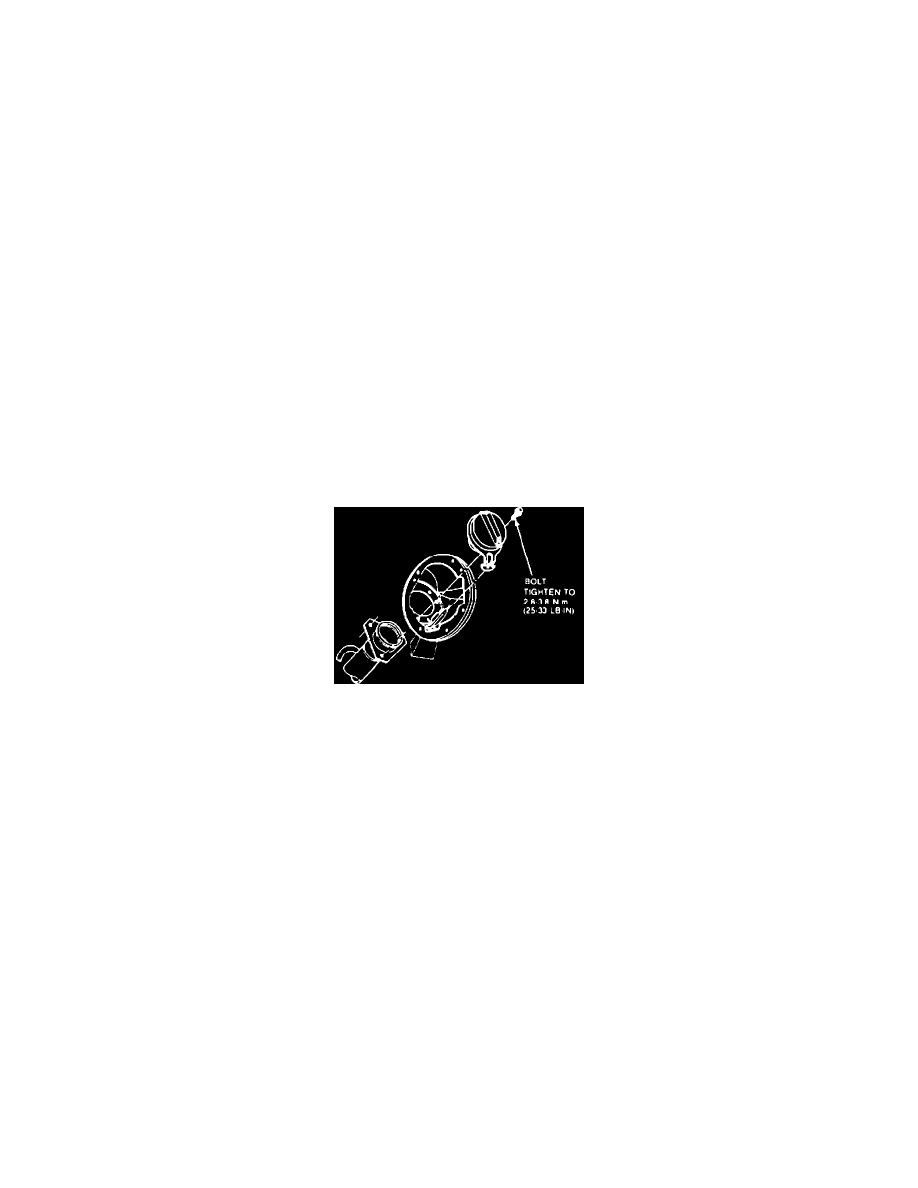Town Car V8-281 4.6L SOHC (1991)

THE OXIDATION REACTION
In order to change HC and CO into harmless materials, the catalytic elements (platinum and palladium) start an oxidation, or burning, reaction in the
catalytic converter. Oxidation is the addition of oxygen to an element or compound. If there is not already enough oxygen in the exhaust, a secondary air
injection system is incorporated into the vehicle's design. This system supplies additional air to the oxidation catalyst. During the oxidation process,
Oxygen (O2) mixes with the excess HC and CO to form H2O and CO2.
Caution should be taken while working on or around catalytic converters and other exhaust system components, due to the considerable heat (900~F to
1,600~F) that is generated during the oxidation process.
THE REDUCTION REACTION
Reduction is the opposite of oxidation, or the chemical removal of oxygen from a material. The reduction reaction changes NOx to harmless nitrogen (N)
and (CO2) by chemically moving the oxygen from the NOx compound to the CO compound. The catalytic elements required for the reduction process
are platinum and rhodium.
The Three-Way Catalytic Converter (TWC) is designed to reduce all three exhaust pollutants, but works best to reduce NOx when the CO level of the
exhaust is between 0.8 and 1.5 percent. As the CO level increases or decreases from that percentage, the TWC converters efficiency decreases. Exhaust
gas first passes through the catalyst, where NOx is reduced to N2 and CO2; then through the catalyst where HC and CO are changed to H2O and CO2.
The Light-Off Catalytic Converter (LOC) is a single bed oxidation-type converter, and is mounted to the exhaust manifold ahead of the main converter.
The LOC primarily used in controlling HC and CO emissions during cold engine warm-up, while the main converter has not yet reached operating
temperature. Heat from the exhaust manifold rapidly warms the LOC in order to start the Oxidation Process, which is then continued at the main
converter.
The Light-Off Catalytic Converter is also referred to as a Pre-Cat or a Mini-Cat by other vehicle manufacturers.
FILL PIPE RESTRICTOR
Fuel Filler
To prevent vehicle refueling with other than Unleaded fuel, the filler neck is equipped with a restrictive insert. The smaller diameter restrictive insert is
designed to fit nozzles of Unleaded gasoline pumps.
It is recommended that the amount of fuel put into the tank be limited to the pumps automatic shut-off point. This allows room for the fuel to expand
during warmer outside temperatures. Overfilling ("Topping-Off") can cause fuel overflow and spillage at the filler cap when the vehicle is stationary or
when the filler cap is removed.
